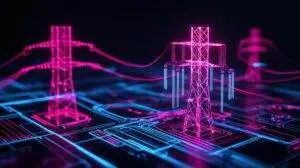By Connor O’Neil
 It used to be so simple: Electricity started with the power plants and ended at the homes and businesses. Now there is power coming from the opposite direction, a few more electrical connections at each building, and a lot more data.
It used to be so simple: Electricity started with the power plants and ended at the homes and businesses. Now there is power coming from the opposite direction, a few more electrical connections at each building, and a lot more data.
As we update power systems to accommodates these changes, there is an opportunity to design adaptivity and intelligence into how electricity works for people, and the controls to do it are already available. In the autonomous energy systems portfolio, researchers at the National Renewable Energy Laboratory (NREL) have made a menu of controls that deconstruct the grid into autonomous cells. Using artificial intelligence (AI) and distributed computing, their controls scale to an unlimited number of devices, and they are ripe for utilities, campuses, companies, and communities to make the most of local energy resources. Some are already taking advantage, and here is how.
Controls for Energy Equity: Consumer Aware Algorithms
NREL’s controls are couched in the language of optimization, but optimal what? That is for the humans to decide, so NREL developers optimized for energy justice in a U.S. Department of Energy (DOE) Office of Electricity-sponsored project named DynaGrid.
The research team measured household vulnerability using data from the U.S. Census Bureau, Federal Emergency Management Agency, and other sources. They identified where people require electricity for medical supplies, where people cannot financially cope with outages, and where people are at a higher risk of natural disasters. With that information, they formulated an optimization problem: how to dynamically partition a neighborhood into reliable and equitable networked microgrids.
Continue reading at the source (National Renewable Energy Laboratory)
Leave a Reply